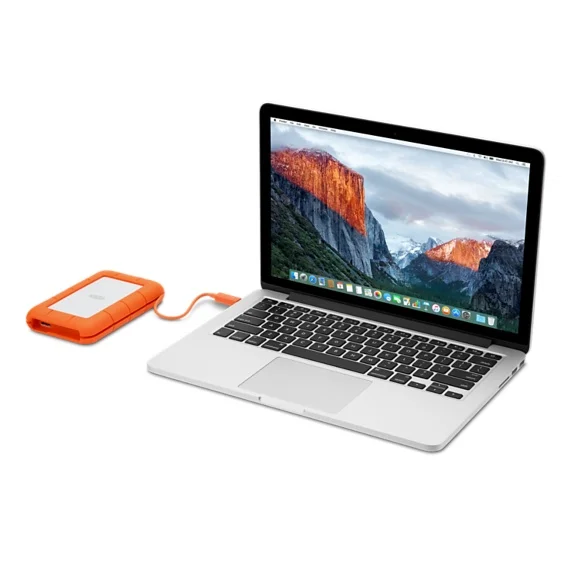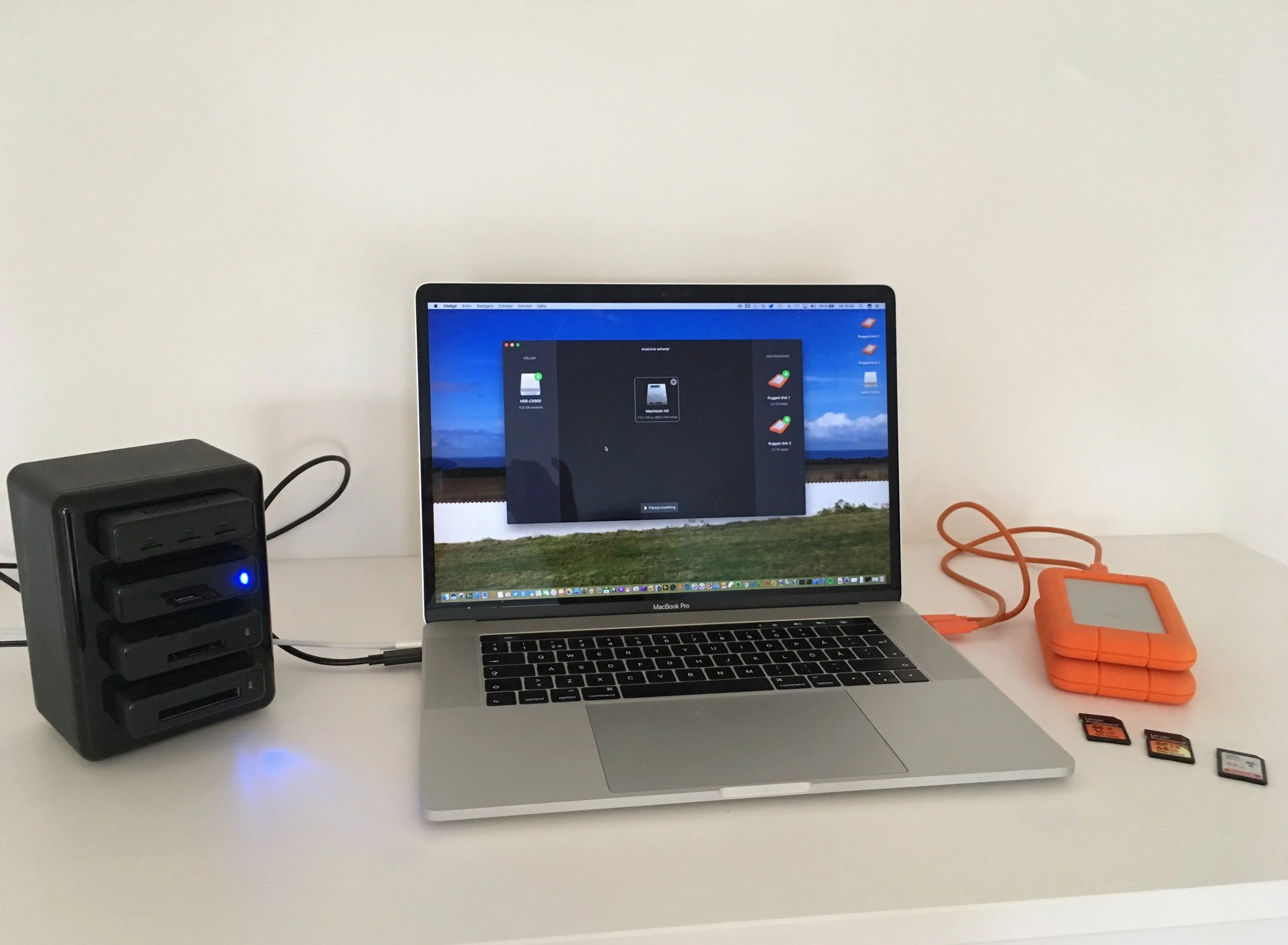Import cards from video camera
The purpose is to assure that we have the cards with videoclips copied to disks and the media is able to be import to a NLE for further use. This approach works for videocameras, DSLR as well as more advanced cinema-cameras.
Copy card to disk
The setup we use is based on Hedge application, running on a MacBook Pro, to copy files from external card reader to two LaCie Rugged 2TB disks with USB-C interface.
We also have a Lexar Professional Hub with card readers for SD, micro-SD, Compact Flash, XQD and CFast cards.
With this setup is it possible to read several different cards at once and copy them to two disk simultaneously really fast.
The preferences are set as when copying, the Hedge application create unique folders, e.g. HD-00297 (card) and the program verifies the files during transfer.
Repeat this activity for each card.
The orginal two harddisks are, after media is verified, taken to post production at different times, by different persons and copied to post-production servers, unless post-processing is on set, as described as below.
Create folder structure for post production
Remove one of the external disks and connect a large fast external editing disk.
Create a folder for the project if not done previously in the root Media folder.
Use naming convetion <project no>, <project name> (<producer>). E.g. 10067, Seven Deadly Sins of IT (Architecture Corner).
Add a folder structure for each type of media, to make it easier to share different parts in post production. Use camera name as folder name for your media, e.g. Canon, Sony, Gopro etc.
There is a fine line of making to many folders and to deep folder structure, so this structure is used to create a balance based on easy of use for different roles in post production and sharing of media.
Don’t change name of these folder at a later stage.
Add timecode to footage
Create a folder to store media with added time code, and use same identifier as folder for imported card, e.g. HD-00297 for media from the card stored in folder HD-00297 (card). This makes it easier to trace if something goes wrong. This folder should be in a subfolder for the camera, e.g. Sony, Canon etc.
Use Tentacle sync studio to add time code from audio lanes to the clip. Export as Orginal media with embedded timecode to the newly
created folder on the editing disk.
Repeat for each imported card.
RENAME files
We rename the copied files on disks using Bridge and a preset where we give each file a new name based on the folder name and a sequence number, e.g. HD-00267-0001, where HD-00267 is the sequence for each card given by Hedge.
The benefit with unique names for each clip is that we can trace back a random clip in post-processing back to the original card and that two clips never have the same name.
Repeat for each folder.
VISUAL CHECK of clips
Make a visual check of at least the first clip, last clip and a random clip within the folder to verify the content.
First when this step is approved is OK to erase original memory cards.
Repeat for each folder.




